
Costpoint’s automated overtime calculation streamlines your payroll process, ensuring compliance and reducing administrative burden. By leveraging Deltek’s Time & Expense module, you can configure custom overtime rules that automatically align with your company’s policies and state or federal labor laws. After updating the Overtime Hours Rules tab to reflect your companies’ business rules and to abide by state and/or federal labor laws and verifying the Pay Types Links subtask is correctly configured, which both can be found on the Timesheet Classes screen, along with changes within a few control screens in Time & Expense, you can ensure that your employees are documenting their time in accordance with your company’s policies and in compliance with any agreements you may have.
When timesheets are exported out of Time & Expense and into Costpoint, it is also vital that your pay types are configured with the correct factor on the Manage Pay Types screen. When all applicable screens have been accurately set up and the automatic calculation function is correctly implemented, you can be confident that your employees are compensated correctly and fairly. It can help eliminate headaches that may result from incorrect timekeeping entries.
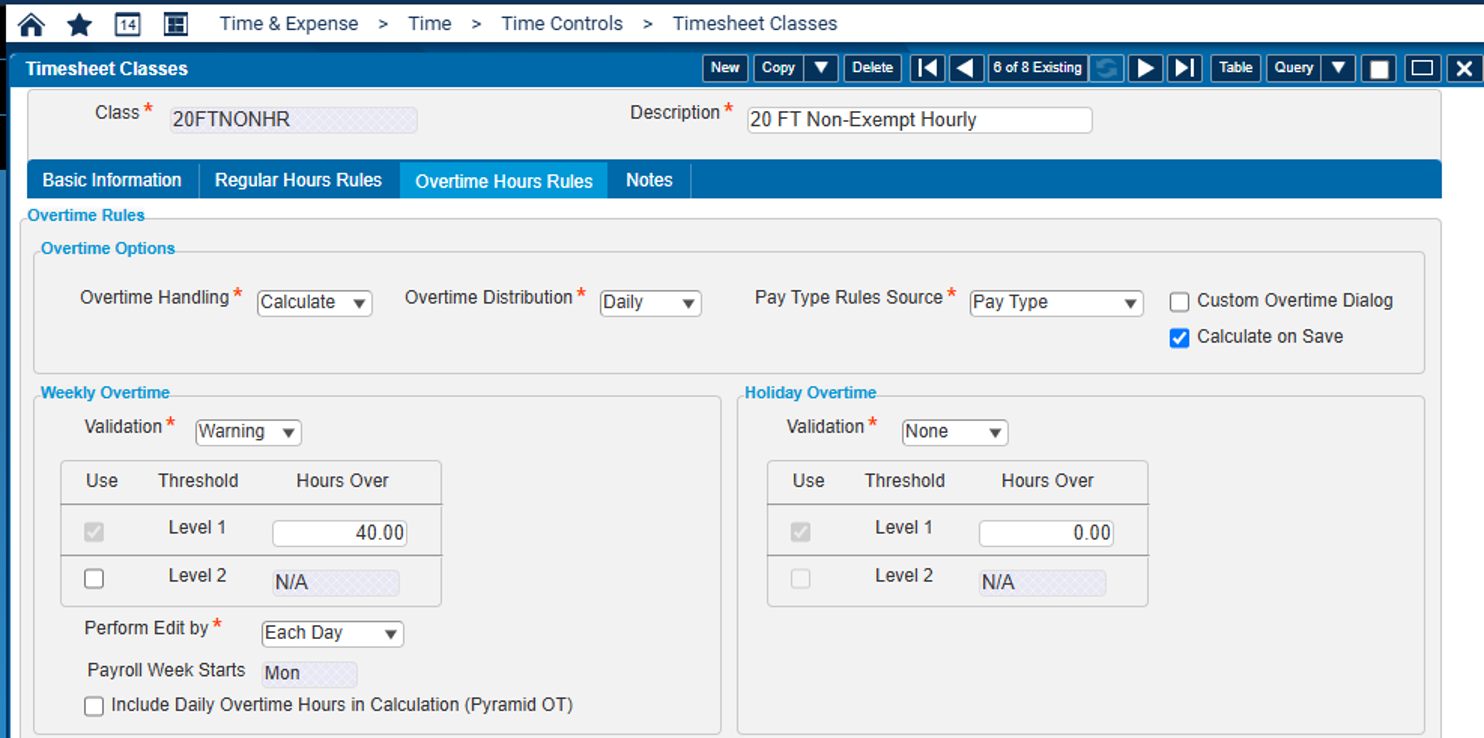
Ensure Compliance with Federal and State Overtime Regulations
One of the most important reasons to set up automatic calculation of overtime that could be vital to your organization is that it ensures you are complying with Federal and State Regulations. The Fair Labor Standards Act (FLSA) states that non-exempt employees who work more than 40 hours in a workweek are subject to overtime pay. When utilizing the automatic overtime calculation functionality to comply with labor laws, your employees can have peace of mind that their pay has been calculated correctly. Also, as their employer, you can avoid potential fines, legal issues, and unnecessary correspondence with government agencies.
If you have employees in certain states that have specific overtime laws, like California, you can have a custom configuration for those employees that may be affected. Because California mandates that non-exempt employees be paid 1.5 times their regular rate for working over 8 hours in a day or 40 hours in a week and double time for working over 12 hours in a day, you can use the rules-based system within Deltek’s Time & Expense module to guarantee you are compliant with California’s overtime laws.
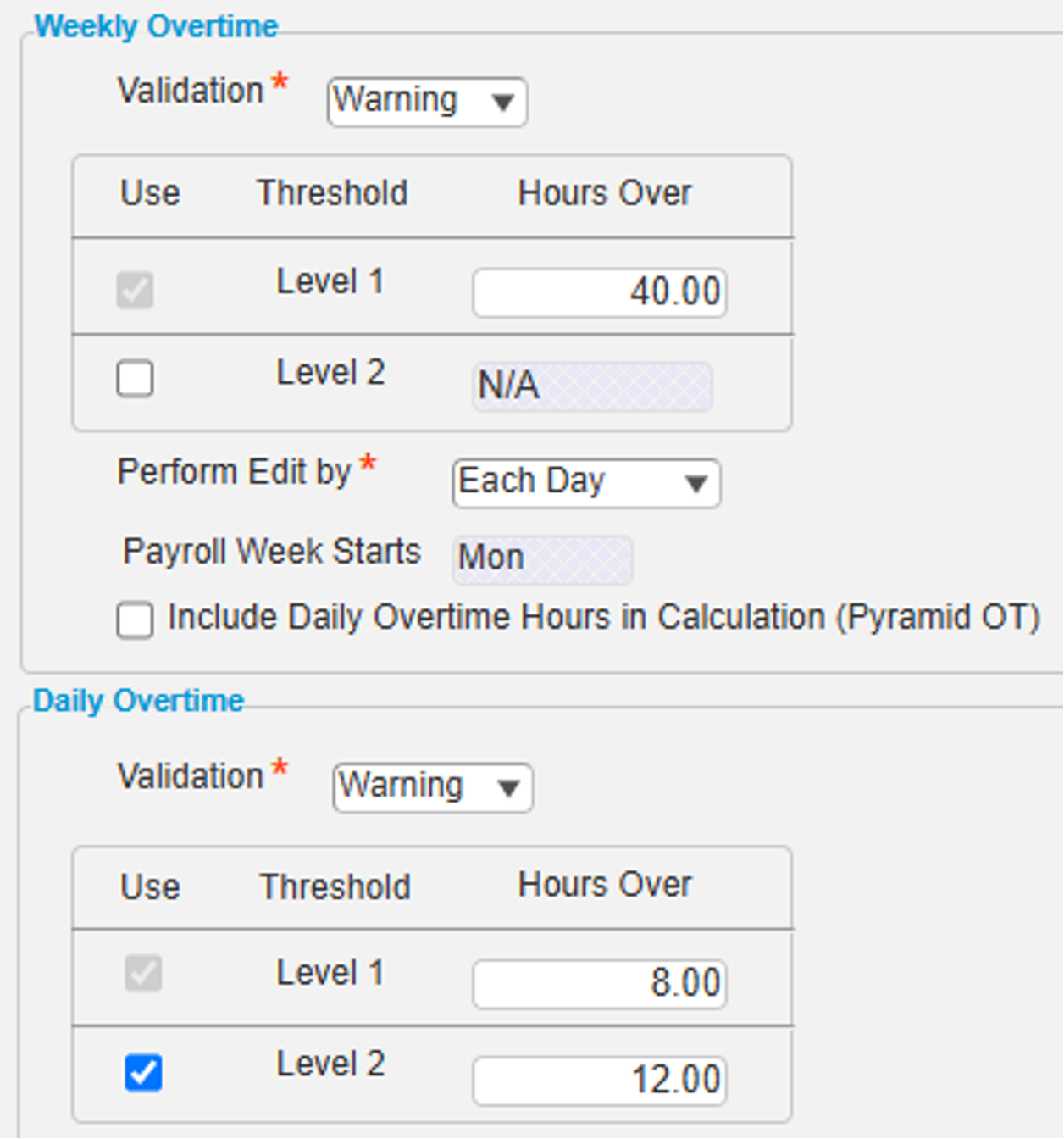
There are also mechanisms within Costpoint to control overtime hours rules by state or labor location, whether they are calculated daily or weekly. That is why it’s essential to make sure the correct Overtime State is listed in the employee’s salary screen. Costpoint compares the employee’s overtime state on their salary screen to the overtime rules by state or labor location.
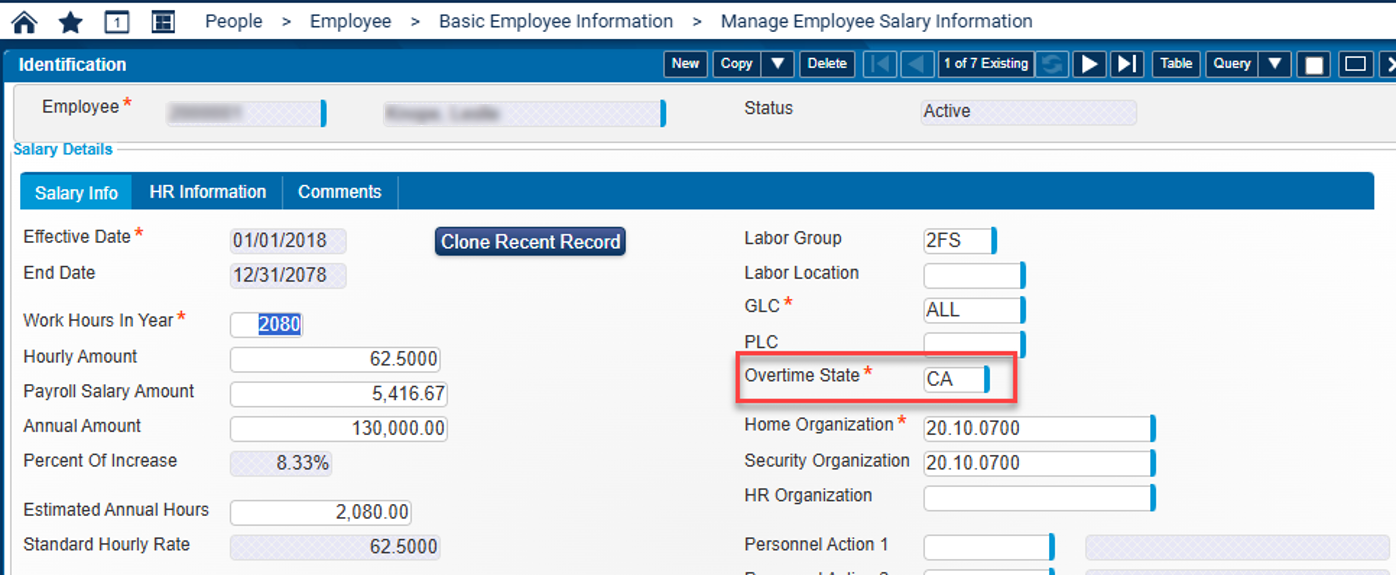
Avoid Payroll Errors and Tax Compliance Issues with Costpoint
Along the same vein as labor law compliance, you must be aware of tax laws and reporting requirements regarding overtime hours. For example, Alabama’s current legislation states that any overtime pay received by a full-time hourly wage paid employee is excluded from gross income and exempt from Alabama state income tax. This makes it vital that employees correctly identify their overtime hours to ensure you comply with state laws and ensure that overtime hours are not taxed at the state level.
You can control the pay type’s taxability within the Manage Pay Type Taxability screen by marking the Overtime pay type exempt from Alabama state taxes.

Once payroll is computed, you can see where overtime wages have been shown as an exempt pay type and, therefore, are exempt from state withholding.
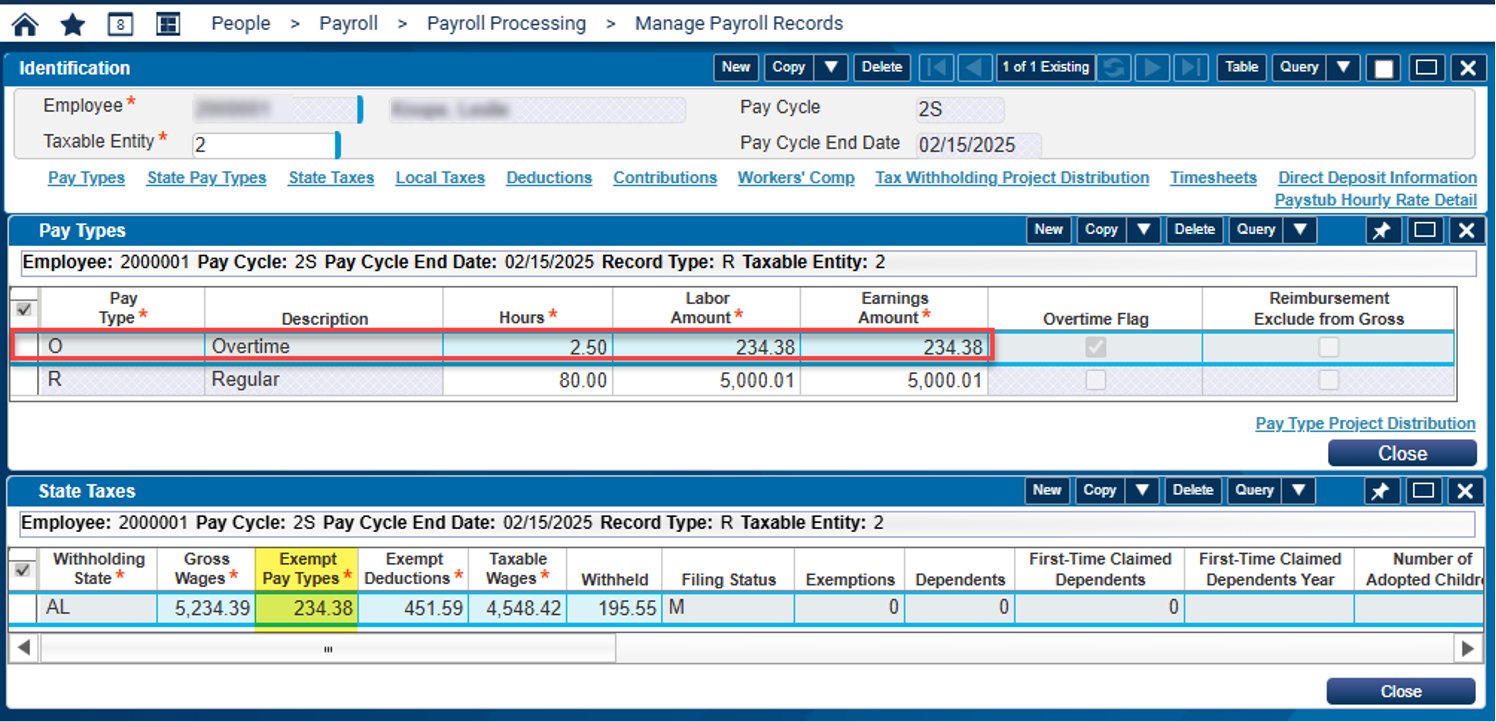
Meeting Contractual and Union Requirements with Automated Overtime Rules
Another reason to use the automatic overtime calculation functionality is to guarantee you are meeting contractual obligations with your employees and union agreements. While the SCA does not require overtime pay, FLSA overtime pay requirements may apply to non-exempt workers on SCA contracts. The premium portions of the overtime wages may not be reimbursable, which is why correctly identifying regular vs. overtime wages is vital so you know they are being accurately recorded. Having a way to track overtime hours and pay accurately ensures you are adhering to those terms. Costpoint can recast the overtime premium portion of the labor cost to another project on the employee’s timesheet after the timesheet has been imported into Costpoint. This allows for more precise cost tracking and reporting on specific projects.

Prevent Employee Burnout and Improve Workforce Management
Employee morale and avoiding employee burnout can also be a key factor in why you should research setting up calculating automatic overtime. Suppose employees fail to enter their time correctly by manually choosing an overtime pay type. In that case, the overtime rules set up within the timesheet class assigned to them can help correctly identify when that employee is working over the hours dictated in your business rules regarding overtime by automatically calculating overtime hours when the timesheet is saved. When the system automatically calculates overtime hours and identifies the correct pay type for any hours deemed overtime hours, this can help management detect when employees have been consistently overloaded. This can lead to many negative consequences for employees, their colleagues, management, and the company. Studies have shown that working too many hours can lead to many negative consequences, including decreased productivity, poor quality work, stress, burnout, and a poor work-life balance.
Increase Employee Satisfaction and Retention with Fair Compensation
When employees are compensated fairly and not overloaded, this will lead to employee happiness and job satisfaction. As a result, this will help with employee retention and reduce turnover. When you have a consistent workforce, employees become more proficient at their jobs, it reduces expenses, and it promotes the company’s goal of ensuring employees’ well-being.
Configuring Automatic Overtime Calculation in Costpoint
Costpoint allows for the application of your company’s specific needs when configuring automatic overtime calculations.
Overtime pay types must first be set up on the Manage Pay Types screen. They must be marked as an overtime pay type and given a factor greater than 1.0. Be sure to include all employee types eligible for the overtime pay type. Customized pay types for various scenarios can be preconfigured on this screen and then added to specific timesheet classes based on your business rules.
Within the Timesheet Classes screen, you can set up overtime calculation rules for each timesheet class that may be entitled to overtime pay. It offers the ability to design the system to require an overtime pay type for many different scenarios, including working over a certain number of hours per day or per workweek. It also has the functionality to calculate overtime on holidays or weekends automatically.
Mapping of the overtime pay types occurs on a couple of different screens within Time & Expense, including the Pay Type Links subtask of the Timesheet Classes screen and the Pay Types screen. Two levels are available for overtime mapping for the same pay type in the case where employees will get one rate when they reach a predetermined number of hours and then another rate for another amount of hours. Further customization is available within Time & Expense if holiday hours count towards overtime.

Since some states have specific requirements for their overtime rules, these requirements can be set up for each state on a daily or weekly basis. Set up on this screen is required to calculate overtime automatically. Alternatively, the overtime rules can be set up by labor location. If both screens are set up, Costpoint will first look at the labor location listed on the timesheet. If the labor location from the timesheet is not listed, it will move on to the state rules that have been configured. Something to remember when using these screens is that the employee must benefit from using the rules by location rather than by state. Costpoint will apply the rules dictated on the Manage Overtime Rules by State screen if it is better for the employee based on the state setup.
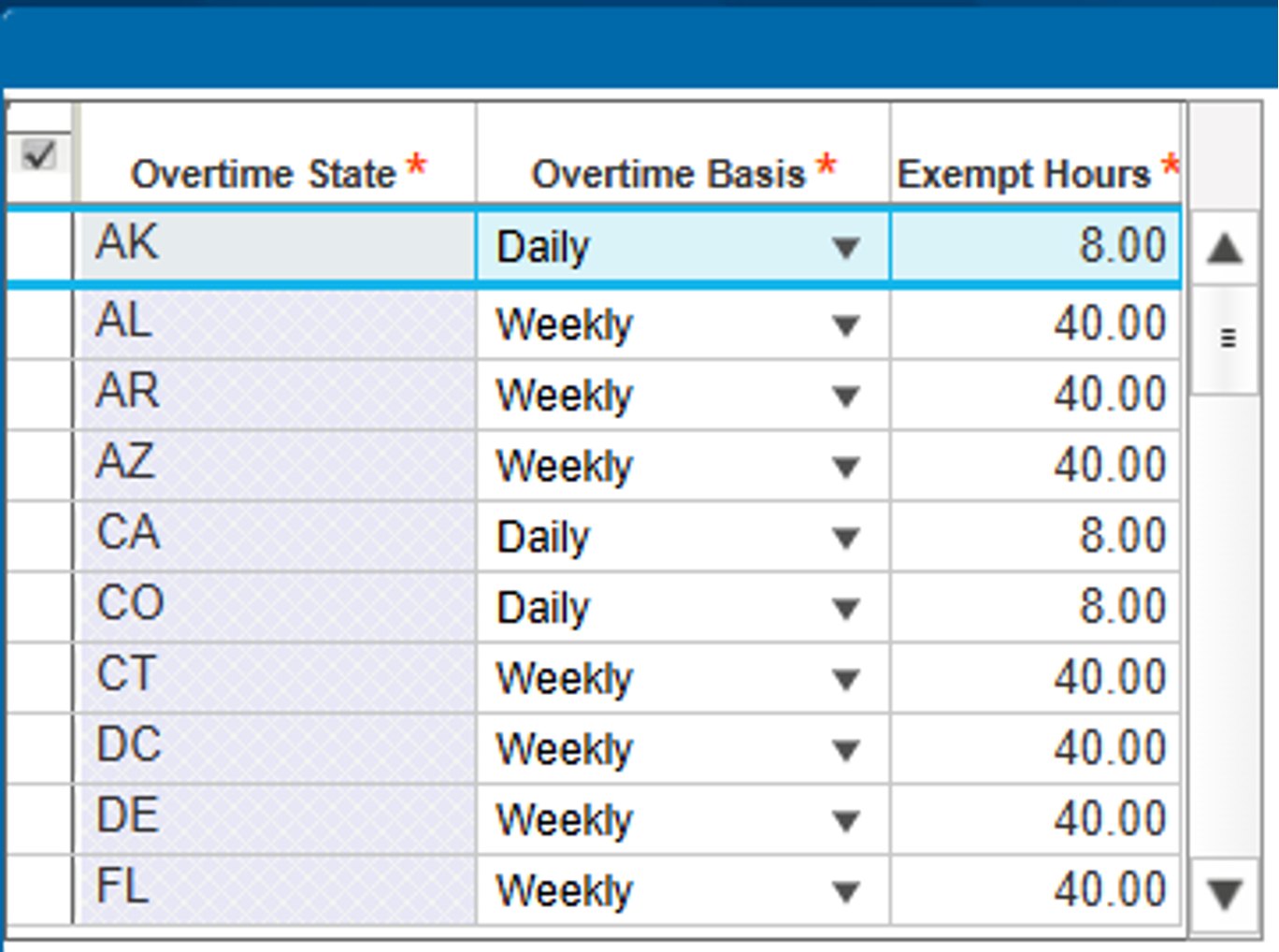
Once the setup is complete, employees will enter their time on their timesheets as regular hours. Automatic calculation and distribution of overtime occurs when the employee saves their timesheet. The calculation and distribution of overtime hours are based on the overtime rules and how the regular pay types have been mapped to the overtime pay types. The employee and their manager will be able to see a summary of hours that were automatically calculated as overtime on the Pay Type subtask of the timesheet.
Employees will appreciate the easier process of entering time when your company takes advantage of this functionality that Costpoint offers.
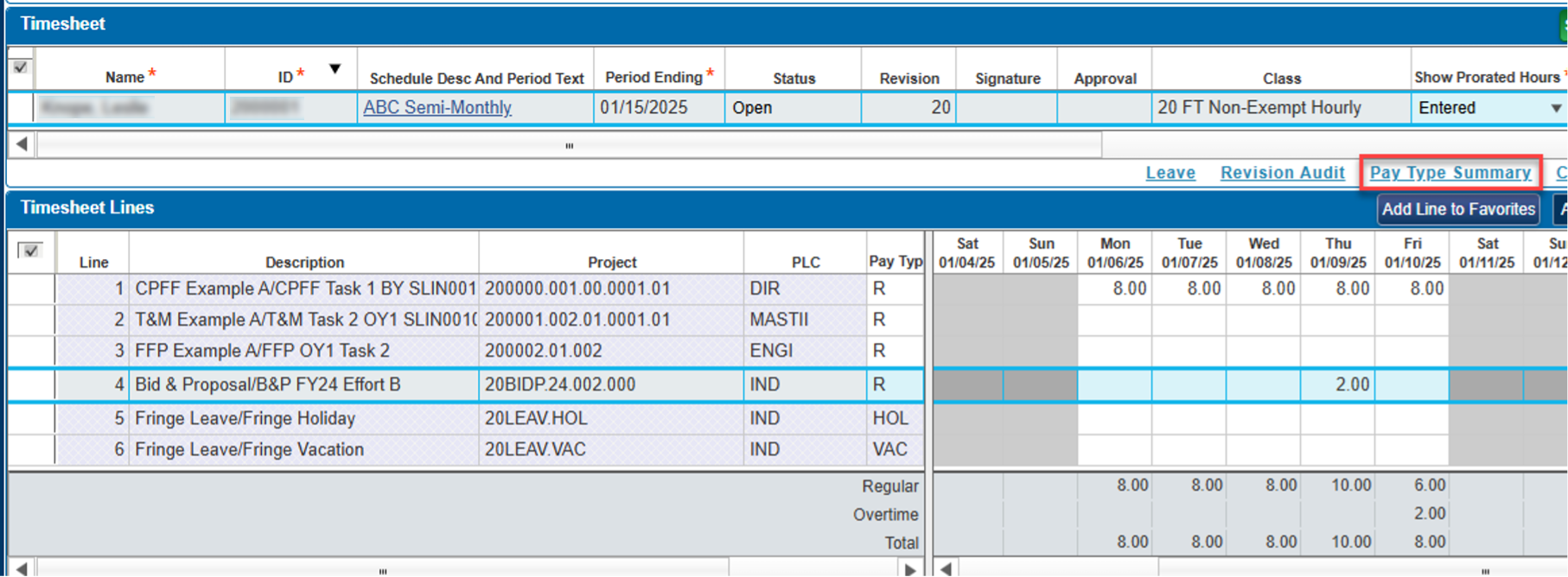

There are many things to consider when setting up automatic overtime calculation, including which pay types count towards overtime, the hierarchy of rules pertaining to overtime, restricting these rules and pay types to certain employees, and the rate at which overtime is calculated. Other things to consider would be the taxability of overtime pay types and contract stipulations where the premium portion would need to be reallocated to a different project.
How Redstone GCI Can Help Optimize Your Costpoint Setup
Ensuring your Deltek Costpoint setup aligns with regulatory requirements and company policies can be complex. Our Costpoint consulting team at Redstone GCI has the expertise to help you configure automatic overtime calculations accurately, minimizing compliance risks and optimizing your payroll process. Reach out to us to streamline your timekeeping and ensure your system works seamlessly for your business.


 Mallory Spragins is a Senior Consultant in Redstone Government Consulting’s Costpoint Consulting Team, specializing in the Deltek Costpoint People and Time & Expense modules. She provides outsourced payroll support, Deltek Costpoint implementation and operation guidance, and employee training to government contractors. Since joining Redstone GCI, Mallory has become a trusted resource for Costpoint expertise in Labor, Leave, and Payroll, helping our clients navigate complex payroll processes with confidence. Her commitment to continuous learning is reflected in her achievement as a Certified Payroll Professional (CPP), further enhancing the value she brings to both our firm and clients. Mallory’s problem-solving skills, attention to detail, and client-focused approach make her an integral part of Redstone GCI’s team. Mallory has played a key role in providing expertise in system configuration, training, and process optimization in Deltek Costpoint’s People and Time & Expense areas. She specializes in the areas related to labor, leave, and payroll, as well as developing tailored training and instructional materials that enable employees, supervisors, and administrators to navigate Costpoint confidently. Her in-depth understanding of Deltek Costpoint’s Time and People modules strengthens collaboration between accounting, payroll, and HR departments. In addition, Mallory has over 15 years of experience in accounting, financial management, and operations, having spent much of her career in higher education administration before transitioning to government contracting. Before joining Redstone GCI, she worked in finance and operations at a major academic institution, managing financial processes, reconciliations, and multi-million-dollar budgets. She was responsible for account reconciliations, policy and procedure compliance, procurement, vendor management, and financial reporting in this role. She also led initiatives to improve operational efficiency, including implementing paperless workflows and optimizing financial data tracking. In addition to financial management, Mallory has extensive experience in training and personnel management, having hired, trained, and supervised professional staff and student employees throughout her career. Her expertise in payroll, budget forecasting, and financial system integrations makes her well-equipped to support Redstone GCI’s clients with Costpoint implementations and troubleshooting. Mallory’s strong technical background, hands-on financial experience, and client-focused approach make her a key contributor to Redstone GCI’s team, helping government contractors streamline their systems and maintain compliance with confidence.
Mallory Spragins is a Senior Consultant in Redstone Government Consulting’s Costpoint Consulting Team, specializing in the Deltek Costpoint People and Time & Expense modules. She provides outsourced payroll support, Deltek Costpoint implementation and operation guidance, and employee training to government contractors. Since joining Redstone GCI, Mallory has become a trusted resource for Costpoint expertise in Labor, Leave, and Payroll, helping our clients navigate complex payroll processes with confidence. Her commitment to continuous learning is reflected in her achievement as a Certified Payroll Professional (CPP), further enhancing the value she brings to both our firm and clients. Mallory’s problem-solving skills, attention to detail, and client-focused approach make her an integral part of Redstone GCI’s team. Mallory has played a key role in providing expertise in system configuration, training, and process optimization in Deltek Costpoint’s People and Time & Expense areas. She specializes in the areas related to labor, leave, and payroll, as well as developing tailored training and instructional materials that enable employees, supervisors, and administrators to navigate Costpoint confidently. Her in-depth understanding of Deltek Costpoint’s Time and People modules strengthens collaboration between accounting, payroll, and HR departments. In addition, Mallory has over 15 years of experience in accounting, financial management, and operations, having spent much of her career in higher education administration before transitioning to government contracting. Before joining Redstone GCI, she worked in finance and operations at a major academic institution, managing financial processes, reconciliations, and multi-million-dollar budgets. She was responsible for account reconciliations, policy and procedure compliance, procurement, vendor management, and financial reporting in this role. She also led initiatives to improve operational efficiency, including implementing paperless workflows and optimizing financial data tracking. In addition to financial management, Mallory has extensive experience in training and personnel management, having hired, trained, and supervised professional staff and student employees throughout her career. Her expertise in payroll, budget forecasting, and financial system integrations makes her well-equipped to support Redstone GCI’s clients with Costpoint implementations and troubleshooting. Mallory’s strong technical background, hands-on financial experience, and client-focused approach make her a key contributor to Redstone GCI’s team, helping government contractors streamline their systems and maintain compliance with confidence.